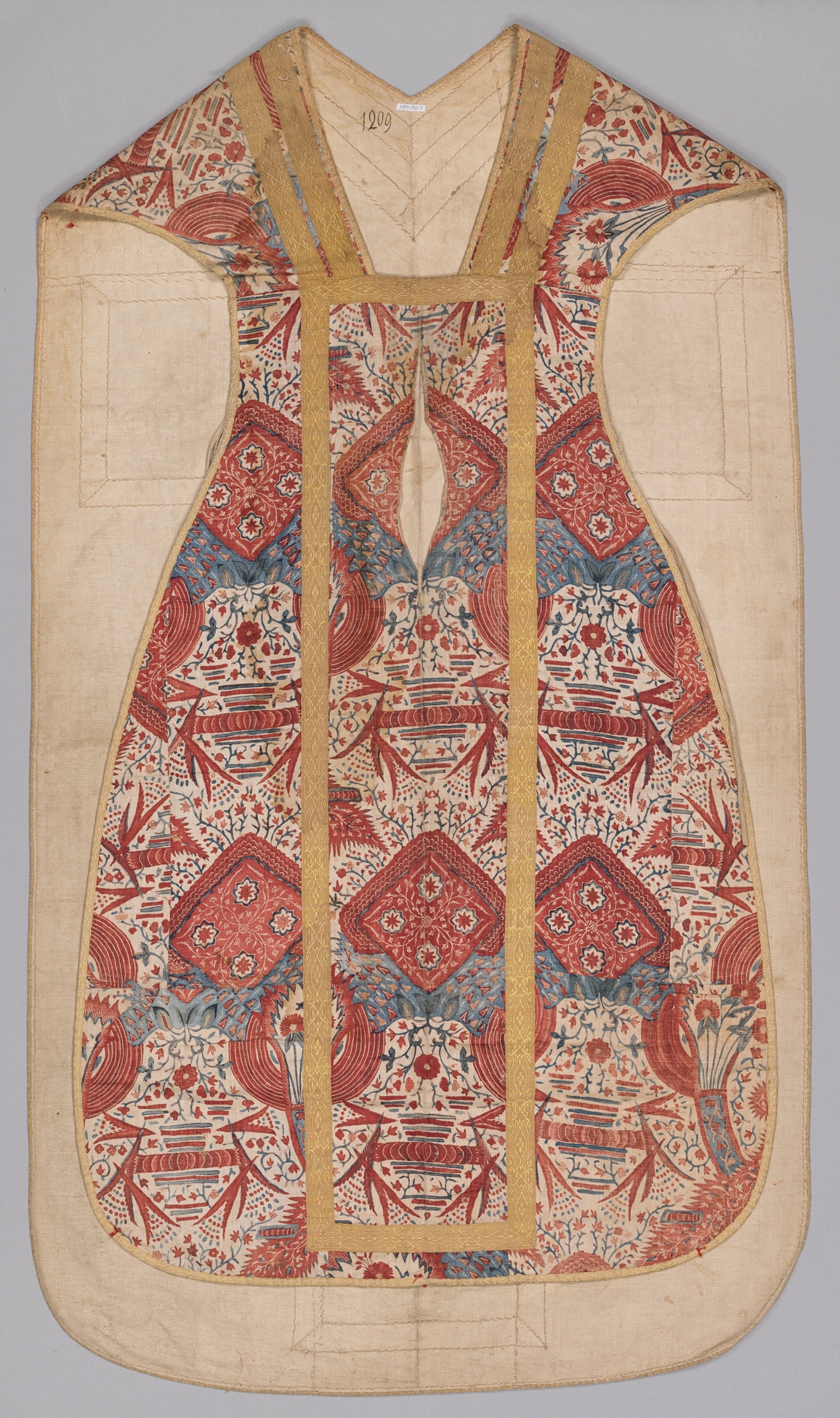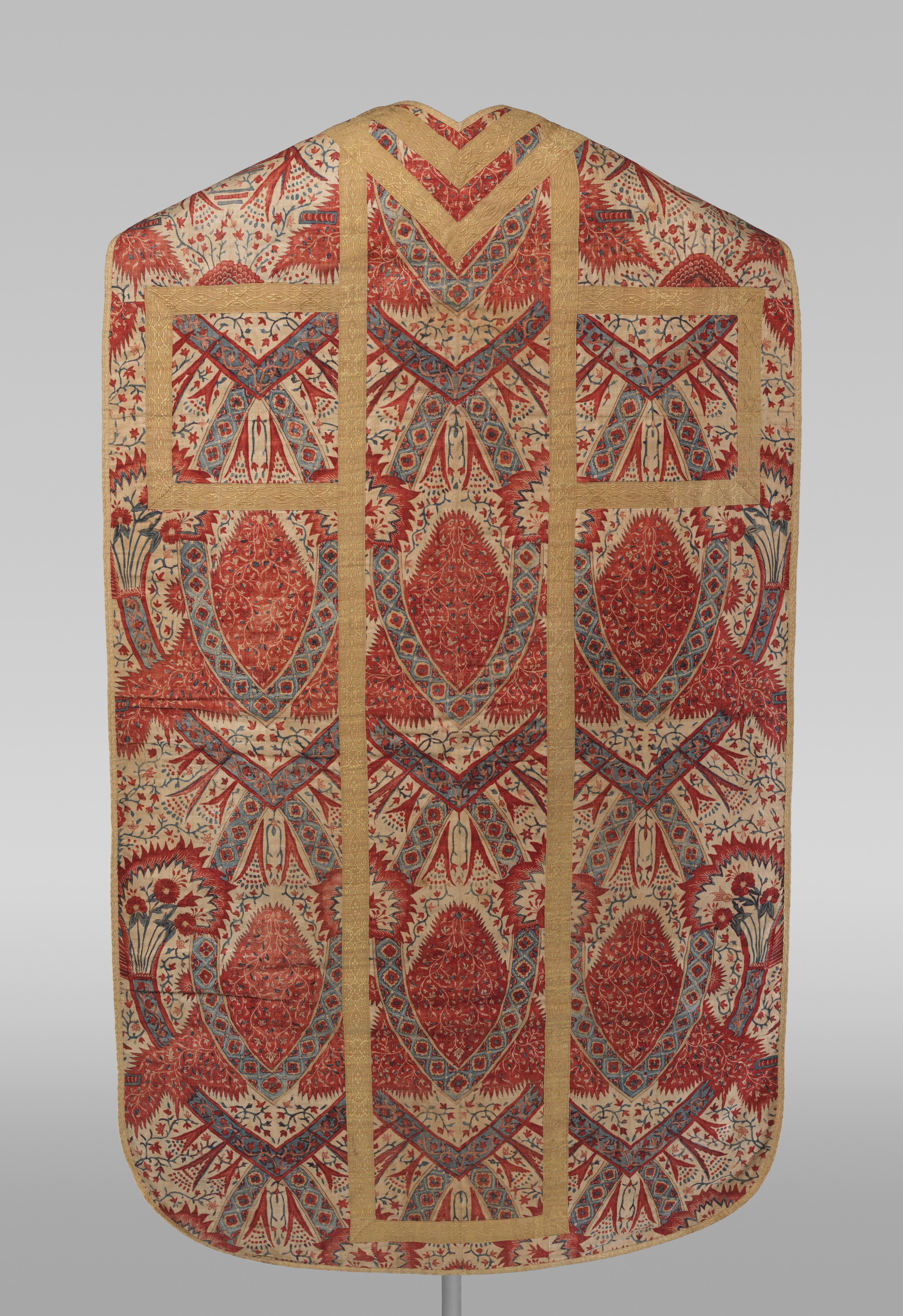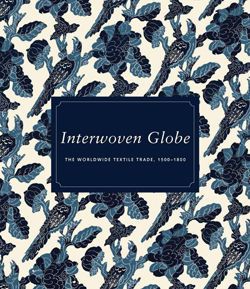Chasuble
Indian, Coromandel Coast and Central European, for European market
Not on view
This glorious painted resist and mordant dyed hand-woven cotton can be attributed to the talented specialist painters, called Kalamkari, active in south-eastern India. Called "Chintz", from the Hindi "chint" meaning "speckled", late seventeenth- and eighteenth-century Europeans adored these textiles, exporting them in great numbers. Here, lengths from one chintz, or perhaps two separate, differently patterned chintzes, have been carefully repurposed, patched together and used to create a Roman Catholic priest's chasuble– the tabard-like tunic worn whilst conducting church services.
This image cannot be enlarged, viewed at full screen, or downloaded.
This artwork is meant to be viewed from right to left. Scroll left to view more.






